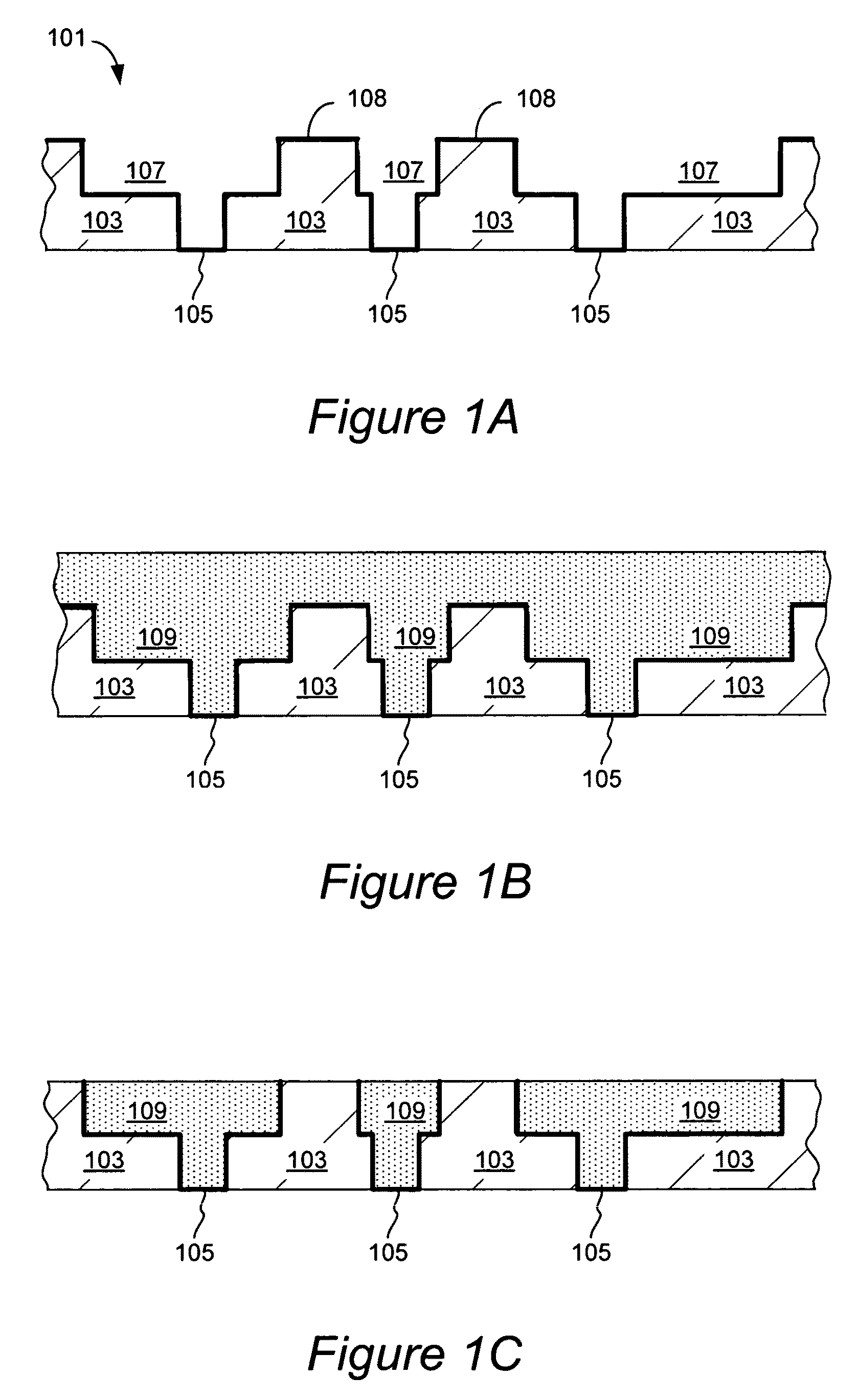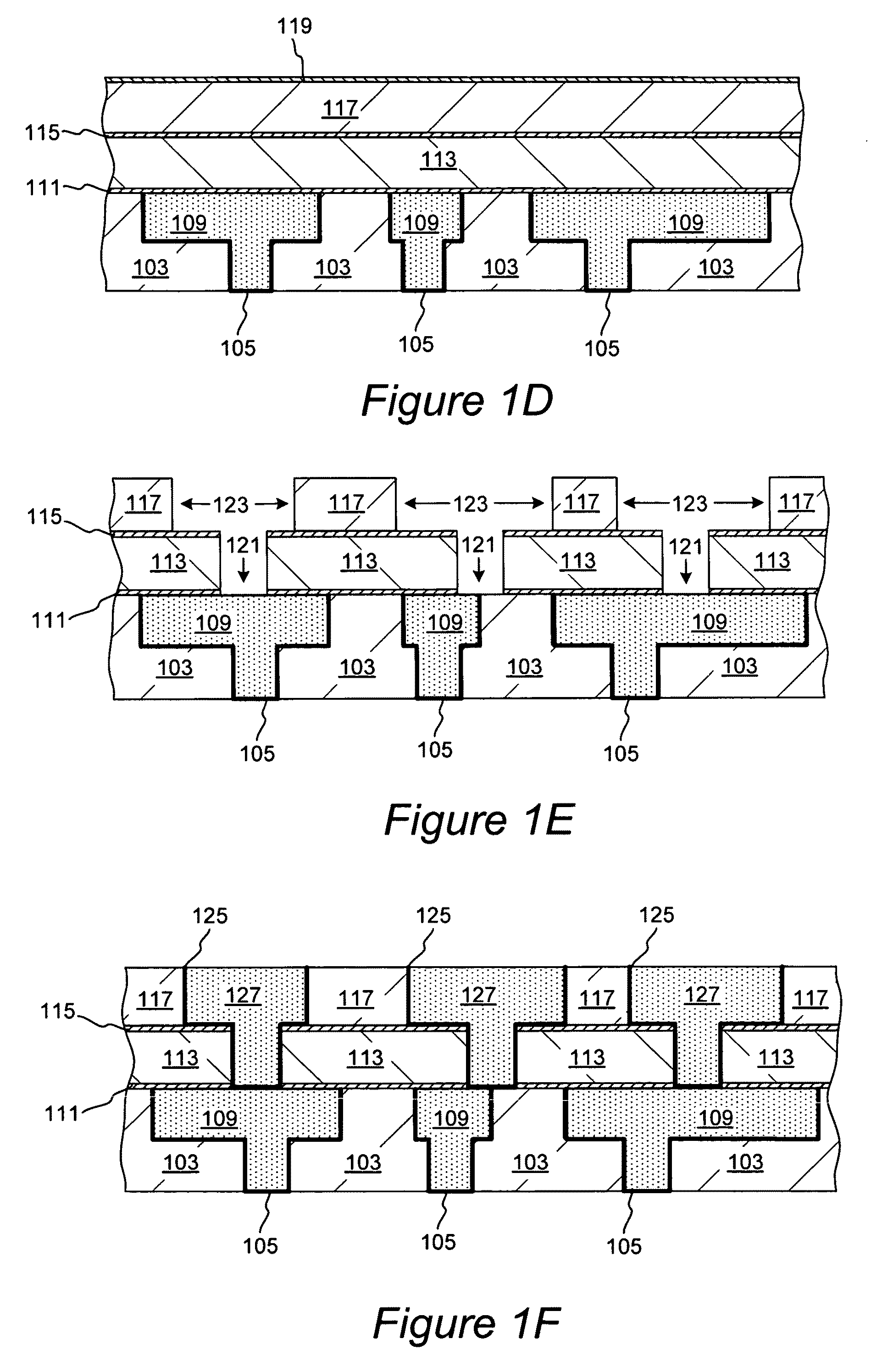PVD-based metallization methods for fabrication of interconnections in semiconductor devices
- Summary
- Abstract
- Description
- Claims
- Application Information
AI Technical Summary
Benefits of technology
Problems solved by technology
Method used
Image
Examples
first embodiment
[0060]In the first embodiment, metal is deposited both within the recessed feature and on the field, such that the net deposition rate at the feature bottom is greater than the net deposition rate on the field. This embodiment is illustrated in FIG. 3A, where a cross-sectional depiction of a partially fabricated substrate undergoing deposition is shown. FIG. 3A shows a cross-sectional depiction of a trench 301 formed in a layer of dielectric 303 and lined with a layer of diffusion barrier material 305. A flux of copper consisting essentially of positively charged copper ions is being sputtered onto the substrate from a copper target. Unlike neutral copper atoms, ionized copper shows a more narrow angle distribution with a large fraction of ions arriving at a 90° angle to the wafer. This improves bottom coverage and reduces overhang. Further, copper ions have high mobility, and may migrate on the substrate surface until they arrive to the point of lowest energy, typically at the rece...
second embodiment
[0061]In the second embodiment, metal is deposited within the recessed feature while no net deposition or etching occurs in the field region. This is illustrated in FIG. 3B, where copper fill 315 resides within the trench, while no copper overburden is formed on the field region, and the diffusion barrier layer 203 remains exposed. In this case E / D ratio is less than 1 at the trench bottom, and is about 1 in the field region.
third embodiment
[0062]In the third embodiment, metal is deposited within the recessed feature while material is simultaneously removed (net etched) from the field region. This is illustrated in FIG. 3C, where the trench 301 is partially filled with copper layer 315, while diffusion barrier material is completely removed from the field exposing the dielectric layer 307. In this case E / D ratio is less than one at the trench bottom but is greater than one in the field region.
[0063]The net deposition rates of at least about 40 Å / second at the trench bottom can be achieved by this method. When etching of diffusion barrier material is occurring in the field simultaneously with recess fill, net etch rates of at least about 1 Å / second in the field can be achieved. For example a 400 nm deep trench can be filled in 100 seconds, while within the same time a 100 Å thick diffusion barrier material may be simultaneously removed from the field region.
[0064]It is understood that provided methods can be used to com...
PUM
| Property | Measurement | Unit |
|---|---|---|
| Fraction | aaaaa | aaaaa |
| Fraction | aaaaa | aaaaa |
| Fraction | aaaaa | aaaaa |
Abstract
Description
Claims
Application Information
 Login to View More
Login to View More - R&D
- Intellectual Property
- Life Sciences
- Materials
- Tech Scout
- Unparalleled Data Quality
- Higher Quality Content
- 60% Fewer Hallucinations
Browse by: Latest US Patents, China's latest patents, Technical Efficacy Thesaurus, Application Domain, Technology Topic, Popular Technical Reports.
© 2025 PatSnap. All rights reserved.Legal|Privacy policy|Modern Slavery Act Transparency Statement|Sitemap|About US| Contact US: help@patsnap.com



